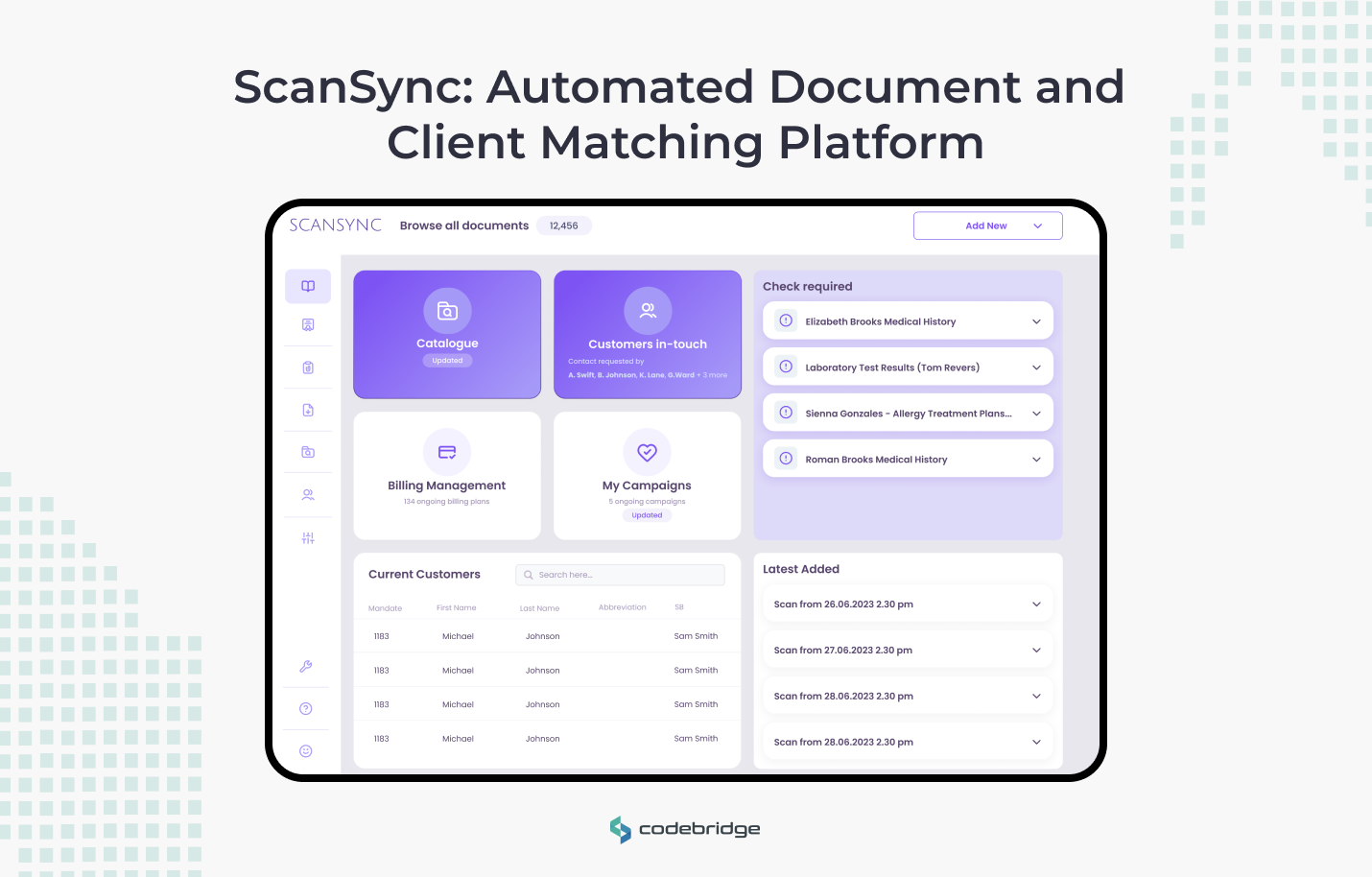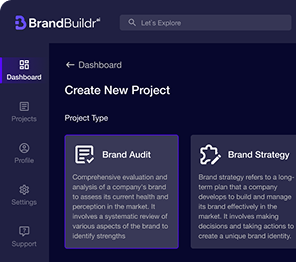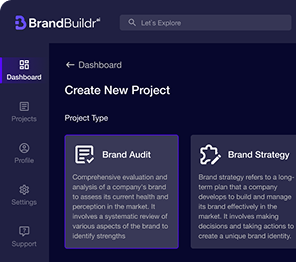Die moderne Geschäftslandschaft erfordert ein beispielloses Maß an betrieblicher Effizienz und Kostenoptimierung. Daher setzen Unternehmen weltweit auf ausgeklügelte Tools zur Automatisierung von Geschäftsprozessen, die die Art und Weise, wie Arbeit erledigt wird, grundlegend verändern. Der Markt für Geschäftsprozessautomatisierung ist in den letzten Jahren rasant gewachsen. Es wird von 14,87 Milliarden $ im Jahr 2024 auf 16,46 Milliarden $ im Jahr 2025 wachsen, was einem durchschnittlichen jährlichen Wachstum entspricht Rate (CAGR) von 10,7%. Diese erhebliche Marktexpansion spiegelt die wachsende Erkenntnis der Unternehmensleiter wider, dass Automatisierung nicht nur ein technologisches Upgrade, sondern eine strategische Notwendigkeit darstellt, um Wettbewerbsvorteile in zunehmend dynamischen Märkten aufrechtzuerhalten.
Das überzeugende Geschäftsszenario für die Implementierung von Automatisierung gewinnt weiter an Bedeutung, da Unternehmen von erheblichen messbaren Vorteilen des Einsatzes strategischer BPA-Tools berichten. Statista-Studie zeigt, dass 99% der Unternehmen erkennen, dass die Automatisierung erhebliche Vorteile bietet, während 52% berichten, dass die Anzahl manueller Fehler nach der Implementierung erheblich reduziert wurde. Das Ausmaß dieser Vorteile unterstreicht, warum sich die Automatisierung von Geschäftsprozessen von einer optionalen Erweiterung zu einem wesentlichen Bestandteil moderner Betriebsstrategien entwickelt hat.
%20(1).png)
Was sind Tools zur Automatisierung von Geschäftsprozessen und warum sind sie wichtig?
Tools zur Automatisierung von Geschäftsprozessen sind ausgefeilte Softwarelösungen zur Automatisierung sich wiederholender, regelbasierter Aufgaben und komplexer Arbeitsabläufe, für die traditionell manuelle Eingriffe und Überwachung erforderlich waren. BPA-Tools nutzen fortschrittliche Technologien, darunter:
- Künstliche Intelligenz
- Maschinelles Lernen
- Workflow-Orchestrierung
um intelligente Systeme zu entwickeln, die mehrstufige Prozesse mit minimaler menschlicher Überwachung ausführen können und gleichzeitig ein hohes Maß an Genauigkeit und Konformität gewährleisten. Diese umfassenden Plattformen ermöglichen es Unternehmen, automatisierte Arbeitsabläufe zu entwerfen, zu implementieren und zu optimieren, die mehrere Abteilungen, Systeme und Interessengruppen umfassen und gleichzeitig einen Überblick über die Prozessleistung und -ergebnisse in Echtzeit bieten.
Die strategische Bedeutung von BPA-Tools geht weit über die einfache Aufgabenautomatisierung hinaus und umfasst eine umfassende betriebliche Transformation, die die organisatorische Agilität erhöht, das Betriebsrisiko reduziert und die Kundenzufriedenheit verbessert. Moderne Geschäftsumgebungen erfordern:
- Schnelle Reaktionsfähigkeit
- Lieferung in gleichbleibender Qualität
- Skalierbarer Betrieb, der sich an veränderte Marktbedingungen anpassen kann, ohne dass der Ressourcenbedarf proportional steigt
Die Rationalisierung der Geschäftsabläufe durch intelligente Automatisierung ermöglicht es Unternehmen, diese Ziele zu erreichen und gleichzeitig nachhaltige Wettbewerbsvorteile zu erzielen, die für Wettbewerber nur schwer zu replizieren sind.
Die Rolle von BPA-Tools bei der Verbesserung des Geschäftsbetriebs
Tools zur Automatisierung von Geschäftsprozessen dienen als grundlegende Infrastruktur für moderne digitale Unternehmen. Sie ermöglichen eine nahtlose Integration zwischen unterschiedlichen Systemen und schaffen gleichzeitig einheitliche Workflows, die traditionelle Unternehmensgrenzen überschreiten. Diese Plattformen ermöglichen die Rationalisierung von Geschäftsabläufen durch:
- Eliminierung manueller Übergaben
- Reduzierung von Dateneingabefehlern
- Sicherstellung einer konsistenten Prozessausführung unabhängig von Volumenschwankungen oder Komplexitätsschwankungen
Das Ergebnis ist eine verbesserte betriebliche Planbarkeit und eine verbesserte Ressourcenauslastung, was direkt zu einer verbesserten Rentabilität und Kundenzufriedenheit beiträgt.
Die betrieblichen Verbesserungsmöglichkeiten der BPA-Tools gehen über die individuelle Prozessoptimierung hinaus und umfassen eine unternehmensweite Transformation, die die Koordination, Kommunikation und Entscheidungsfindung auf allen Organisationsebenen verbessert. Automatisierte Workflows bieten:
- Einblick in den Prozessstatus in Echtzeit
- Leistungskennzahlen
- Behandlung von Ausnahmen
das es Managern ermöglicht, schnell fundierte Entscheidungen zu treffen und gleichzeitig den Überblick über wichtige Geschäftsabläufe zu behalten.
Fortschrittliche BPA-Tools beinhalten ausgefeilte Analyse- und Berichtsfunktionen, die tiefe Einblicke in die Prozessleistung, die Ressourcenauslastung und Verbesserungsmöglichkeiten bieten. Diese Analysefunktionen ermöglichen es Unternehmen:
- Identifizieren Sie Ineffizienzen
- Messen Sie die Auswirkungen von Prozessänderungen
- Optimieren Sie die Ressourcenallokation auf der Grundlage empirischer Daten und nicht auf Annahmen
Der kontinuierliche Verbesserungszyklus, der durch diese Tools ermöglicht wird, stellt sicher, dass automatisierte Prozesse im Laufe der Zeit immer effektiver werden und sich gleichzeitig an sich ändernde Geschäftsanforderungen und Marktbedingungen anpassen.
Warum jedes Unternehmen in Prozessautomatisierungssoftware investieren sollte
Die Investition in Prozessautomatisierungssoftware liefert messbare Renditen in mehrfacher Hinsicht, darunter direkte Kosteneinsparungen, verbesserte Qualität, verbesserte Skalierbarkeit und bessere Wettbewerbsposition. A) Bericht von McKinsey & Company hebt hervor, dass Erstanwender der Vertriebsautomatisierung durchweg von Effizienzsteigerungen von 10 bis 15 Prozent und einem Umsatzsteigerungspotenzial von bis zu 10 Prozent berichten. Diese finanziellen Vorteile ergeben sich aus niedrigeren Arbeitskosten, minimierten Fehlerquoten, einer verbesserten Ressourcenauslastung und einer verbesserten Kapazität zur Bewältigung des gestiegenen Geschäftsvolumens ohne proportionale Erhöhung der Betriebskosten.
Neben unmittelbaren finanziellen Renditen bietet Prozessautomatisierungssoftware strategische Funktionen, die Unternehmen in die Lage versetzen, nachhaltig zu wachsen und Wettbewerbsvorteile zu erzielen. Automatisierte Prozesse ermöglichen eine konsistente Servicebereitstellung, reduzieren die Abhängigkeit von Fachwissen und sorgen für skalierbare Abläufe, die einer Geschäftserweiterung Rechnung tragen, ohne dass eine proportionale Erhöhung der Personal- oder Infrastrukturinvestitionen erforderlich ist. Diese Skalierbarkeit ist besonders wertvoll in Zeiten schnellen Wachstums oder Marktexpansionen, in denen manuelle Prozesse zu betrieblichen Engpässen und Qualitätsinkonsistenzen führen würden.

Hauptvorteile von Tools zur Geschäftsprozessautomatisierung
Die Implementierung von Tools zur Automatisierung von Geschäftsprozessen bietet umfassende Vorteile, die die Unternehmensleistung in mehreren Dimensionen verändern und gleichzeitig nachhaltige Wettbewerbsvorteile schaffen. Zu den Vorteilen der Automatisierung von Geschäftsprozessen gehören:
- Sofortige betriebliche Verbesserungen, einschließlich reduzierter Verarbeitungszeiten, verbesserter Genauigkeit und verbesserter Ressourcenauslastung
- Strategische Vorteile wie verbesserte Skalierbarkeit, erhöhte Agilität und erhöhte Innovationskapazität
Diese vielfältigen Vorteile schaffen einen Mehrwert, der Investitionen in die Automatisierung rechtfertigt und gleichzeitig Unternehmen für langfristigen Erfolg in wettbewerbsintensiven Märkten positioniert.
Quantitative Untersuchungen belegen durchweg die erheblichen Auswirkungen der Implementierung der Automatisierung auf die Leistungskennzahlen des Unternehmens. Die Automatisierung von Arbeitsabläufen kann:
- Reduzieren Sie Fehler um bis zu 70%
- Steigern Sie die Kundenbindung und -zufriedenheit in Bereichen, in denen Automatisierung implementiert ist, um 6,7%
Diese Verbesserungen spiegeln die Fähigkeit der Automatisierung wider:
- Eliminieren Sie menschliche Fehler bei Routineprozessen
- Gewährleisten Sie die konsistente Ausführung komplexer Workflows unabhängig von Volumen- oder Komplexitätsschwankungen
Zu den langfristigen strategischen Vorteilen von BPA-Tools gehören:
- Verbessertes organisatorisches Lernen
- Verbessertes Wissensmanagement
- Höhere Innovationskapazität, die sich aus der Entlastung der Humanressourcen von Routineaufgaben ergibt
Über 90% der IT-Experten berichten, dass die Prozessautomatisierung es Mitarbeitern ermöglicht, komplexere und strategischere Aufgaben zu übernehmen, während fast 90% von einem erhöhten Geschäftswachstum aufgrund der Automatisierung verschiedener Prozesse berichten. Diese Transformation der Personalallokation führt zu nachhaltigen Wettbewerbsvorteilen, die sich im Laufe der Zeit noch verstärken, wenn Unternehmen Fähigkeiten in strategischen Bereichen aufbauen und gleichzeitig durch Automatisierung ihre betriebliche Exzellenz aufrechterhalten.
Grundlegende Funktionen von Tools zur Geschäftsprozessautomatisierung
Umfassende Tools zur Automatisierung von Geschäftsprozessen enthalten mehrere wichtige Funktionen, die synergetisch zusammenarbeiten, um leistungsstarke, flexible Plattformen zu schaffen, die in der Lage sind, unterschiedliche organisatorische Anforderungen zu erfüllen und gleichzeitig benutzerfreundliche Oberflächen und robuste Integrationsfunktionen bereitzustellen.
Tools zur Workflow-Automatisierung müssen Folgendes bieten:
%20(1)%20(1).png)
- Intuitive Funktionen zur Prozessgestaltung
- Zuverlässige Ausführungsmodule
- Umfassende Überwachung und Analytik
- Umfangreiche Integrationsmöglichkeiten
Diese Kernfunktionen stellen sicher, dass Automatisierungslösungen unmittelbare betriebliche Anforderungen erfüllen können und gleichzeitig die Flexibilität bieten, sich an sich ändernde Geschäftsanforderungen anzupassen.
Die Architektur effektiver BPA-Tools legt Wert auf Modularität, Skalierbarkeit und Erweiterbarkeit, sodass Unternehmen die Automatisierung schrittweise implementieren und gleichzeitig im Laufe der Zeit umfassende Lösungen entwickeln können. Moderne Plattformen bieten visuelle Workflow-Designer, die es Geschäftsanwendern ermöglichen, automatisierte Prozesse zu erstellen und zu ändern, ohne dass technische Programmierkenntnisse erforderlich sind. Diese Demokratisierung der Automatisierungsentwicklung beschleunigt die Implementierungszeiten und reduziert gleichzeitig die Abhängigkeit von IT-Ressourcen für routinemäßige Prozessänderungen und -verbesserungen.
Fortschrittliche Tools zur Geschäftsprozessautomatisierung beinhalten Funktionen für künstliche Intelligenz und maschinelles Lernen, die intelligente Entscheidungsfindung, adaptive Prozessoptimierung und prädiktive Analysen ermöglichen, die die Effektivität der Automatisierung im Laufe der Zeit verbessern. Diese intelligenten Funktionen ermöglichen es Automatisierungsplattformen, aus Prozessausführungsdaten zu lernen, Optimierungsmöglichkeiten zu identifizieren und Arbeitsabläufe automatisch anzupassen, um die Leistung zu verbessern und gleichzeitig die Einhaltung von Geschäftsregeln und behördlichen Anforderungen zu gewährleisten.

Aufgabenautomatisierung: Vereinfachung sich wiederholender Prozesse
Die Aufgabenautomatisierung stellt die grundlegende Fähigkeit von Tools zur Geschäftsprozessautomatisierung dar und ermöglicht es Unternehmen, die manuelle Ausführung routinemäßiger, sich wiederholender Aktivitäten zu vermeiden und gleichzeitig eine gleichbleibende Qualität und einen gleichbleibenden Zeitplan sicherzustellen.
Die Automatisierung von Geschäftsprozessen beginnt mit der Identifizierung von Routineaufgaben, die vorhersehbaren Mustern folgen und nach vordefinierten Regeln und Kriterien ausgeführt werden können. Zu diesen Aufgaben gehören in der Regel die Dateneingabe, die Dokumentenverarbeitung, das Weiterleiten von Genehmigungen, das Versenden von Benachrichtigungen und Systemaktualisierungen, die erhebliche Personalressourcen in Anspruch nehmen und gleichzeitig nur einen begrenzten Mehrwert für die Geschäftsergebnisse bieten.
Die Implementierung der Aufgabenautomatisierung bietet unmittelbare Vorteile in Form von kürzeren Bearbeitungszeiten, verbesserter Genauigkeit und verbesserter Ressourcennutzung, sodass sich die Mitarbeiter auf höherwertige Aktivitäten konzentrieren können, die Kreativität, Problemlösung und strategisches Denken erfordern. Die automatisierte Aufgabenausführung beseitigt die mit der menschlichen Leistung verbundenen Schwankungen und gewährleistet gleichzeitig die konsistente Einhaltung organisatorischer Standards und behördlicher Anforderungen.
Ausgefeilte Funktionen zur Aufgabenautomatisierung gehen über die einfache regelbasierte Ausführung hinaus und umfassen intelligente Entscheidungsfindung, Ausnahmebehandlung und adaptives Lernen, sodass automatisierte Systeme komplexe Szenarien und sich ändernde Anforderungen bewältigen können. Moderne Automatisierungsplattformen können künstliche Intelligenz integrieren, um Entscheidungen auf der Grundlage von Kontextinformationen zu treffen, Ausnahmen gemäß vordefinierter Eskalationsverfahren zu behandeln und aus Prozessausführungsdaten zu lernen, um die Leistung im Laufe der Zeit zu verbessern. Diese fortschrittlichen Funktionen ermöglichen es Unternehmen, immer komplexere Prozesse zu automatisieren und gleichzeitig Flexibilität und Anpassungsfähigkeit aufrechtzuerhalten.
Integration mit bestehenden Geschäftssystemen für einen nahtlosen Arbeitsablauf
Integrationsfunktionen stellen wichtige Funktionen für Workflow-Automatisierungstools dar und ermöglichen eine nahtlose Konnektivität zwischen Automatisierungsplattformen und vorhandenen Geschäftsanwendungen, einschließlich ERP-Systemen (Enterprise Resource Planning), CRM-Plattformen (Customer Relationship Management) und spezialisierter branchenspezifischer Software.
Tools zur Automatisierung von Geschäftsprozessen müssen robuste Anwendungsprogrammierschnittstellen (APIs), vorgefertigte Konnektoren und flexible Datenzuordnungsfunktionen bieten, die den bidirektionalen Datenfluss und die Prozesskoordination über mehrere Systeme hinweg ermöglichen, ohne dass eine kundenspezifische Entwicklung oder Systemänderungen erforderlich sind.
Die Effektivität der Automatisierungsimplementierung hängt in hohem Maße von der Fähigkeit ab, einheitliche Workflows zu erstellen, die mehrere Anwendungen umfassen und gleichzeitig die Datenkonsistenz und Prozessintegrität wahren.
Die Integration von CRM in ERP-Systeme verbessert beispielsweise die Arbeitseffizienz, indem Prozesse wie Rechnungsstellung, Bestellungen und Bestandsverwaltung automatisiert werden. Gleichzeitig wird die Wahrscheinlichkeit von Fehlern verringert und die Mitarbeiter sparen Zeit. Diese Integrationen ermöglichen es Unternehmen, durchgängig automatisierte Prozesse zu erstellen, die manuelle Übergaben und erneute Dateneingaben überflüssig machen und gleichzeitig einen umfassenden Einblick in den Geschäftsbetrieb bieten.
Moderne Tools zur Automatisierung von Geschäftsprozessen bieten ausgefeilte Integrationsfunktionen wie Datensynchronisierung in Echtzeit, ereignisgesteuerte Trigger und intelligente Datentransformation, die komplexe Workflows mehrerer Systeme ermöglichen und gleichzeitig die Systemunabhängigkeit und Flexibilität wahren. Diese Funktionen stellen sicher, dass automatisierte Prozesse vorhandene Technologieinvestitionen nutzen können und bieten gleichzeitig die Flexibilität, sich an Systemaktualisierungen, -ersetzungen oder -erweiterungen anzupassen, ohne dass eine vollständige Neugestaltung der Automatisierung erforderlich ist. Das Ergebnis ist eine nachhaltige Automatisierungsarchitektur, die den langfristigen Investitionswert schützt und gleichzeitig eine kontinuierliche Verbesserung und Optimierung ermöglicht.
So wählen Sie die richtigen Tools zur Automatisierung von Geschäftsprozessen für Ihr Unternehmen
Die Auswahl geeigneter Tools zur Automatisierung von Geschäftsprozessen erfordert eine umfassende Bewertung der organisatorischen Anforderungen, technischen Einschränkungen und strategischen Ziele, um sicherzustellen, dass die ausgewählten Lösungen sowohl den unmittelbaren Bedürfnissen als auch den langfristigen Wachstumsplänen entsprechen.
Das Auswahlverfahren sollte mit einer detaillierten Analyse der aktuellen Prozesse, der Identifizierung von Automatisierungsmöglichkeiten und einer klaren Definition von Erfolgskriterien beginnen, die als Grundlage für Evaluierungs- und Implementierungsentscheidungen dienen. Dieser systematische Ansatz stellt sicher, dass Investitionen in die Automatisierung den größtmöglichen Nutzen bringen und gleichzeitig die Flexibilität bieten, sich an sich ändernde Geschäftsanforderungen anzupassen.
Die Bewertungsmethodik für Prozessautomatisierungssoftware sollte mehrere Dimensionen umfassen, darunter:
- Funktionalität
- Bedienbarkeit
- Skalierbarkeit
- Integrationsmöglichkeiten
- Unterstützung durch Anbieter
- Gesamtbetriebskosten
Unternehmen müssen den Funktionsumfang mit der Komplexität der Implementierung abwägen und gleichzeitig sicherstellen, dass die ausgewählten Lösungen zukünftigem Wachstum und sich ändernden Anforderungen gerecht werden, ohne dass ein vollständiger Austausch erforderlich ist. Ziel ist es, Plattformen zu identifizieren, die einen unmittelbaren Mehrwert bieten und gleichzeitig die Grundlagen für eine umfassende Automatisierungstransformation im Laufe der Zeit schaffen.
Eine erfolgreiche Auswahl von BPA-Tools erfordert eine enge Zusammenarbeit zwischen Geschäftsbeteiligten, IT-Experten und potenziellen Endbenutzern, um sicherzustellen, dass die ausgewählten Lösungen die betrieblichen Anforderungen erfüllen und gleichzeitig benutzerfreundliche Oberflächen bieten, die die Akzeptanz fördern und die Nutzung maximieren. Das Auswahlverfahren sollte Pilotimplementierungen, die Erfassung von Benutzerfeedback und Leistungsmessungen umfassen, um die Wirksamkeit der Lösung vor der vollständigen Bereitstellung zu überprüfen. Dieser iterative Ansatz reduziert das Implementierungsrisiko und stellt gleichzeitig sicher, dass die endgültige Auswahl den erwarteten Nutzen und die Nutzerzufriedenheit mit sich bringt.
Wichtige Überlegungen bei der Auswahl von BPA-Tools für Ihr Unternehmen
Die Bewertungskriterien für Tools zur Geschäftsprozessautomatisierung sollten die Ausrichtung auf spezifische Geschäftsanforderungen priorisieren und gleichzeitig sicherstellen, dass die ausgewählten Lösungen die Flexibilität und Skalierbarkeit bieten, die für zukünftiges Wachstum und sich ändernde Anforderungen erforderlich sind.
Zu den wichtigsten Überlegungen gehören:
%20(1).png)
- Anforderungen an die Prozesskomplexität
- Integrationsbedarf
- Qualifikationsstufen der Benutzer
- Anforderungen zur Einhaltung der Vorschriften
- Budgetbeschränkungen
Unternehmen müssen die unmittelbaren Funktionsanforderungen sorgfältig mit den langfristigen strategischen Anforderungen abwägen, um zu vermeiden, dass Lösungen ausgewählt werden, die kurzfristige Vorteile bieten, die zukünftigen Funktionen jedoch einschränken.
Die Benutzerfreundlichkeit ist ein entscheidendes Auswahlkriterium, da der Erfolg der Automatisierungsimplementierung stark von der Akzeptanz durch die Benutzer und der effektiven Nutzung durch die Geschäftsbeteiligten abhängt. Tools zur Automatisierung von Geschäftsprozessen sollten intuitive Benutzeroberflächen bieten, die es Geschäftsanwendern ermöglichen, automatisierte Prozesse zu erstellen, zu ändern und zu überwachen, ohne dass umfangreiche technische Schulungen oder fortlaufender IT-Support erforderlich sind.
Die Plattform sollte visuelle Workflow-Designer, vorgefertigte Vorlagen und geführte Einrichtungsprozesse bieten, die die Implementierung beschleunigen und gleichzeitig die Lernkurve für neue Benutzer verkürzen.
Die Sicherheits- und Compliance-Funktionen müssen sorgfältig geprüft werden, um sicherzustellen, dass die ausgewählten BPA-Tools den Unternehmensstandards und behördlichen Anforderungen entsprechen und gleichzeitig einen angemessenen Schutz für sensible Daten und kritische Geschäftsprozesse bieten. Die Plattform sollte robuste Zugriffskontrollen, Prüfprotokolle, Datenverschlüsselung und Funktionen zur Compliance-Berichterstattung bieten, die es Unternehmen ermöglichen, Sicherheitsstandards einzuhalten und gleichzeitig behördliche Auflagen zu erfüllen. Darüber hinaus sollte der Anbieter sein Engagement für Sicherheit durch regelmäßige Updates, Sicherheitszertifizierungen und transparente Sicherheitspraktiken unter Beweis stellen.
Skalierbarkeit und Anpassung: Vorbereitung auf Wachstum
Überlegungen zur Skalierbarkeit sind bei der Auswahl von Tools zur Geschäftsprozessautomatisierung von größter Bedeutung, da Unternehmen Plattformen benötigen, die ein erhöhtes Prozessvolumen, eine höhere Komplexität und einen größeren Umfang von Prozessen bewältigen können, ohne dass ein vollständiger Austausch oder größere architektonische Änderungen erforderlich sind.
Die gewählte Lösung sollte Folgendes bieten:
- Flexible Bereitstellungsoptionen
- Elastische Ressourcenzuweisung
- Modulare Architektur, die eine schrittweise Erweiterung bei gleichbleibender Leistung und Zuverlässigkeit ermöglicht
Diese Skalierbarkeit stellt sicher, dass Investitionen in die Automatisierung auch dann einen Mehrwert bieten, wenn Unternehmen wachsen und sich weiterentwickeln.
Anpassungsmöglichkeiten ermöglichen es Unternehmen, Automatisierungslösungen an spezifische Geschäftsanforderungen anzupassen und gleichzeitig die Ausrichtung auf einzigartige Betriebsprozesse und Branchenanforderungen aufrechtzuerhalten.
Tools zur Automatisierung von Geschäftsprozessen sollten Folgendes bieten:
- Konfigurierbare Arbeitsabläufe
- Benutzerdefinierte Felddefinitionen
- Flexible Geschäftsregeln
- Erweiterbare Integrationsmöglichkeiten
Diese Flexibilität stellt sicher, dass die Automatisierung den Geschäftsbetrieb verbessert, anstatt ihn einzuschränken.
Die Plattformarchitektur sollte sowohl horizontale als auch vertikale Skalierung unterstützen, um einer größeren Benutzerbasis, einem größeren Prozessvolumen und funktionellen Anforderungen gerecht zu werden, ohne Leistungseinbußen oder architektonische Einschränkungen.
Cloud-basierte Lösungen bieten im Vergleich zu lokalen Alternativen oft bessere Skalierbarkeitsmerkmale und bieten gleichzeitig eine kostengünstige Ressourcenzuweisung, die die Ausgaben an der Auslastung ausrichtet.
Unternehmen sollten die Skalierbarkeit nicht nur im Hinblick auf die technische Kapazität bewerten, sondern auch im Hinblick auf:
- Lizenzmodelle
- Anforderungen an den Support
- Fortlaufender Wartungsbedarf, der sich auf die langfristigen Kosten und die Betriebseffizienz auswirkt
Reale Anwendungen von Tools zur Geschäftsprozessautomatisierung
Tools zur Automatisierung von Geschäftsprozessen finden praktische Anwendungen in verschiedenen Branchen und Unternehmensfunktionen und stellen ihre Vielseitigkeit und Effektivität bei der Bewältigung verschiedener betrieblicher Herausforderungen und Verbesserungsmöglichkeiten unter Beweis.
Die Automatisierung von Geschäftsprozessen hat sich in folgenden Bereichen als besonders wertvoll erwiesen:
- Wiederkehrende Aufgaben
- Komplexe Arbeitsabläufe
- Koordination mehrerer Interessengruppen
- Verarbeitung von Transaktionen mit hohem Volumen
wo die manuelle Ausführung zu Engpässen, Fehlern und Ressourcenineffizienzen führt. Diese realen Anwendungen bieten konkrete Beispiele dafür, wie Unternehmen die Automatisierung nutzen können, um messbare Verbesserungen in Bezug auf Effizienz, Qualität und Wirtschaftlichkeit zu erzielen.
Der Umfang der Automatisierungsanwendungen wird immer größer, da Unternehmen Erfahrungen mit BPA-Tools sammeln und neue Möglichkeiten zur Prozessverbesserung und -optimierung identifizieren. Branchen wie:
- Fertigung und Gesundheitswesen
- Finanzdienstleistungen und Einzelhandel
haben umfassende Automatisierungslösungen implementiert, die die Art und Weise, wie Arbeit erledigt wird, verändern und gleichzeitig das Kundenerlebnis und die Betriebsergebnisse verbessern.
Erfolgreiche Automatisierungsimplementierungen beginnen in der Regel mit klar definierten, hochvolumigen Prozessen, die klare Möglichkeiten für Effizienzsteigerungen und Fehlerreduzierung bieten. Unternehmen beginnen häufig mit Prozessen wie:
- Bearbeitung von Rechnungen
- Onboarding von Mitarbeitern
- Arbeitsabläufe im Kundenservice
- Generierung von Berichten
vor der Erweiterung auf komplexere abteilungsübergreifende Prozesse, die ausgefeilte Koordinations- und Integrationsfähigkeiten erfordern. Dieser schrittweise Ansatz ermöglicht es Unternehmen, Fachwissen im Bereich Automatisierung aufzubauen und gleichzeitig einen Mehrwert nachzuweisen, der kontinuierliche Investitionen und Erweiterungen rechtfertigt.
Automatisieren Sie den Kundenservice mit BPA-Tools
Die Automatisierung des Kundendienstes ist eine der wirkungsvollsten Anwendungen der Geschäftsprozessautomatisierung. Sie ermöglicht es Unternehmen, schnelleren und konsistenteren Support zu bieten und gleichzeitig die Betriebskosten zu senken und die Kundenzufriedenheit zu verbessern.
Die Automatisierung von Geschäftsprozessen im Kundenservice beinhaltet in der Regel:
- Implementierung von Chatbots und virtuellen Assistenten für erste Kundeninteraktionen
- Automatisierte Ticketweiterleitung je nach Art und Komplexität des Problems
- Intelligentes Wissensdatenbankmanagement
- Eskalationsverfahren, die sicherstellen, dass komplexen Problemen die angemessene Aufmerksamkeit geschenkt wird
Diese automatisierten Systeme können bis zu 80% von routinemäßigen Kundenanfragen ohne menschliches Eingreifen bei gleichzeitiger sofortiger Beantwortung und 24/7 Verfügbarkeit.
Die moderne Automatisierung des Kundenservices umfasst künstliche Intelligenz und Funktionen zur Verarbeitung natürlicher Sprache, die ein anspruchsvolles Verständnis von Kundenanfragen und eine angemessene Antwortgenerierung ermöglichen.
- KI-gestützte Chatbots können den Kontext verstehen, den Gesprächsverlauf verwalten und personalisierte Antworten auf der Grundlage von Kundenprofilen und dem Interaktionsverlauf geben.
- Wenn automatisierte Systeme Probleme nicht lösen können, stellt intelligentes Routing sicher, dass Kunden mit den qualifiziertesten menschlichen Mitarbeitern verbunden sind. Gleichzeitig werden der vollständige Kontext und die Historie bereitgestellt, um eine effiziente Lösung zu ermöglichen.
Die Implementierung der Kundenservice-Automatisierung bietet messbare Vorteile, darunter:
- Verkürzte Reaktionszeiten
- Bessere Problemlösungsraten beim ersten Anruf
- Verbesserte Kundenzufriedenheitswerte
- Signifikante Kosteneinsparungen durch geringere Arbeitsbelastung der Agenten
Bericht von Organisationen, die eine umfassende Automatisierung des Kundenservices implementieren:
- Kostensenkungen von 20-40%
- Verbesserte Kundenzufriedenheitswerte
- Reduzierter Agenten-Burnout
Die Technologie ermöglicht es Unternehmen auch, unabhängig von Schwankungen des Anrufvolumens oder Schwankungen der Agentenverfügbarkeit eine gleichbleibende Servicequalität zu bieten.
Rationalisierung von Personal und Gehaltsabrechnung mit Automatisierungssoftware
Personal- und Gehaltsabrechnungsprozesse sind aufgrund ihrer sich wiederholenden Natur, der Compliance-Anforderungen und des hohen Volumens an Routinetransaktionen, die erhebliche Verwaltungsressourcen beanspruchen, ideale Kandidaten für eine Automatisierung.
Tools zur Automatisierung von Geschäftsprozessen können Folgendes automatisieren:
- Workflows für das Onboarding von Mitarbeitern
- Gehaltsabrechnungen
- Verwaltung der Leistungen
- Prozesse zur Leistungsüberprüfung
- Berichterstattung zur Einhaltung von Vorschriften
und gewährleistet gleichzeitig Genauigkeit und Konsistenz bei allen Transaktionen.
Die Automatisierung der Gehaltsabrechnung bietet besonders erhebliche Vorteile durch:
- Eliminierung manueller Berechnungen
- Verkürzung der Bearbeitungszeit
- Sicherstellung der Einhaltung komplexer Steuervorschriften und Arbeitsgesetze
Tools zur Workflow-Automatisierung können in Zeiterfassungssysteme, Leistungsplattformen und Buchhaltungssoftware integriert werden, um durchgängige Gehaltsabrechnungsprozesse zu erstellen, die nur minimale menschliche Eingriffe erfordern und gleichzeitig vollständige Prüfprotokolle und Compliance-Unterlagen bereitstellen. Unternehmen, die einen umfassenden Bericht zur Automatisierung der Gehaltsabrechnung implementieren:
- Beseitigung von Abrechnungsfehlern
- Signifikante Verkürzung der Bearbeitungszeit
- Verbesserte Mitarbeiterzufriedenheit durch genaue, pünktliche Zahlungen
Die strategischen Vorteile der HR-Automatisierung gehen über die betriebliche Effizienz hinaus und umfassen:
- Verbessertes Mitarbeitererlebnis
- Verbessertes Compliance-Management
- Bessere Datenanalysen als Grundlage für strategische Personalentscheidungen
Automatisierte HR-Prozesse bieten allen Mitarbeitern ein einheitliches Erlebnis und geben den HR-Fachleuten gleichzeitig die Möglichkeit, sich auf strategische Initiativen wie Talententwicklung, Mitarbeiterengagement und Organisationskulturentwicklung zu konzentrieren.
Die durch automatisierte Prozesse gesammelten Daten ermöglichen ausgefeilte Analysen, die als Grundlage für Entscheidungen über Vergütung, Leistungsmanagement und Personalplanung dienen.
Wie ScanSync den Dokumentenabgleich mit der Geschäftsprozessautomatisierung automatisierte
ScanSync ist ein Beispiel für das transformative Potenzial von Tools zur Automatisierung von Geschäftsprozessen bei der Bewältigung komplexer, manueller Herausforderungen bei der Dokumentenverarbeitung, die zuvor erhebliche Personalressourcen beanspruchten und gleichzeitig ein erhebliches Fehlerrisiko mit sich brachten.
Das System wurde entwickelt, um den arbeitsintensiven Prozess von:
- Scannen
- Organisieren
- Dokumente mit entsprechenden Kundendatensätzen abgleichen

Bei der Umsetzung wurden mehrere zentrale Herausforderungen angegangen, darunter:
- Verfahren zur manuellen Überprüfung und Sortierung von Dokumenten, die Fachwissen und Liebe zum Detail erforderten
- Erhebliches Risiko menschlicher Fehler bei der Klassifizierung und dem Abgleich von Dokumenten, die zu Compliance-Problemen oder Problemen mit dem Kundenservice führen könnten
- Zeitintensive Abgleichsprozesse zwischen Dokumenten und Kundenprofilen, die zu Engpässen und verzögerter Servicebereitstellung führten
Diese Herausforderungen führten zusammen zu betrieblichen Ineffizienzen und erhöhten gleichzeitig die Kosten und verringerten die Kundenzufriedenheit.
Codebridge entwickelte eine umfassende webbasierte Anwendung, die fortschrittliche Mustererkennungs- und Metadatenextraktionstechnologien nutzt, um den gesamten Arbeitsablauf der Dokumentenverarbeitung zu automatisieren.
Die Lösung beinhaltet:
- Eine intuitive Benutzeroberfläche mit Drag-and-Drop-Funktionalität, die das Hochladen und Verwalten von Dokumenten vereinfacht
- Automatisierte Dateikategorisierung auf der Grundlage von Inhaltsanalysen und vordefinierten Regeln
- Intelligente Routing-Systeme, die verarbeitete Dokumente auf der Grundlage extrahierter Informationen und Abgleichalgorithmen automatisch den richtigen Kundenprofilen zuordnen
Das System umfasst Verfahren zur Ausnahmebehandlung für komplexe Fälle, die eine menschliche Überprüfung erfordern, und führt gleichzeitig vollständige Prüfprotokolle und die Verarbeitungshistorie.
Die geschäftlichen Auswirkungen von ScanSync Die Implementierung zeigt das erhebliche Wertpotenzial gezielter Automatisierungslösungen. Das System:
- Deutlich reduzierter Arbeitsaufwand durch Automatisierung routinemäßiger Dokumentenverarbeitungsaufgaben
- Höhere Genauigkeit durch Eliminierung manueller Abgleichfehler, die zuvor kostspielige Korrekturverfahren erforderten
- Verkürzen Sie die Bearbeitungszeit um mehr als 60% und verbessern Sie gleichzeitig die allgemeine Servicequalität und Kundenzufriedenheit
Diese Verbesserungen führen direkt zu Kosteneinsparungen, einer verbesserten Kapazitätsauslastung und einer verbesserten Wettbewerbsposition durch schnellere Servicebereitstellung und qualitativ hochwertigere Ergebnisse.
Diese Fallstudie zeigt, wie Tools zur Automatisierung von Geschäftsprozessen spezifische betriebliche Herausforderungen durch intelligente Automatisierung, die menschliches Fachwissen mit technologischen Fähigkeiten kombiniert, in Wettbewerbsvorteile verwandeln können.
Der Erfolg von ScanSync zeigt, dass selbst hochspezialisierte Dokumentenverarbeitungsaufgaben effektiv automatisiert werden können, wenn die richtigen Analyse-, Entwurfs- und Implementierungsmethoden angewendet werden, um Lösungen zu entwickeln, die den tatsächlichen Geschäftsanforderungen entsprechen und gleichzeitig messbare Werte und nachhaltige Wettbewerbsvorteile bieten.
Die Zukunft der Geschäftsprozessautomatisierung: Trends, die es zu beobachten gilt
Die zukünftige Entwicklung der Geschäftsprozessautomatisierung verspricht immer ausgefeiltere Funktionen durch die Integration von:
- Künstliche Intelligenz
- Maschinelles Lernen
- Fortgeschrittene Analytik
das wird die Automatisierung von der regelbasierten Aufgabenausführung hin zu intelligenten, adaptiven Systemen transformieren, die in der Lage sind, autonome Entscheidungen zu treffen und kontinuierlich zu optimieren.
BPA-Tools integrieren schnell kognitive Fähigkeiten, die Folgendes ermöglichen:
- Verständnis von unstrukturierten Daten
- Verarbeitung natürlicher Sprache
- Prädiktive Analysen, die Prozessanforderungen antizipieren und Arbeitsabläufe proaktiv anpassen, um Leistung und Ergebnisse zu optimieren
Neue Trends in der Automatisierung von Geschäftsprozessen unterstreichen Hyperautomatisierung Ansätze, die mehrere Automatisierungstechnologien kombinieren, darunter:
- Robotische Prozessautomatisierung
- Künstliche Intelligenz
- Maschinelles Lernen
- Low-Code-Plattformen
um umfassende Automatisierungsökosysteme zu schaffen, die immer komplexere Geschäftsprozesse bewältigen können.
Es wird erwartet, dass der Hyperautomationsmarkt weiterhin schnell wachsen wird, da Unternehmen versuchen, nicht nur einzelne Aufgaben, sondern ganze Geschäftsfunktionen durch intelligente Orchestrierung mehrerer Automatisierungstechnologien zu automatisieren.
Die Konvergenz der Automatisierung mit anderen neuen Technologien, darunter:
- Internet der Dinge (IoT)
- Blockchain
- Erweiterte Realität
schafft neue Möglichkeiten für die Prozessautomatisierung, die über traditionelle digitale Workflows hinausgehen und physische Prozesse, Lieferkettenmanagement und immersive Benutzererlebnisse umfassen.
Diese technologischen Integrationen werden Automatisierungslösungen ermöglichen, die digitale und physische Abläufe miteinander verbinden und gleichzeitig verbesserte Funktionen für Transparenz, Sicherheit und Benutzerbindung bieten.
Der Aufstieg von KI und maschinellem Lernen in der Prozessautomatisierung
Künstliche Intelligenz und maschinelles Lernen stellen die transformativsten Kräfte dar, die die Zukunft der Geschäftsprozessautomatisierung prägen. Sie ermöglichen Systeme, die:
- Aus Daten lernen
- Treffen Sie intelligente Entscheidungen
- Passen Sie sich ohne explizite Programmierung an sich ändernde Bedingungen an
Tools zur Automatisierung von Geschäftsprozessen enthalten zunehmend KI-Funktionen, die Folgendes ermöglichen:
- Automatisiertes Verstehen von Dokumenten
- Intelligente Datenextraktion
- Prädiktive Prozessoptimierung
- Natürliche Sprachinteraktion, die die Automatisierung für Geschäftsanwender zugänglicher und effektiver macht
Algorithmen für maschinelles Lernen ermöglichen es Prozessautomatisierungssystemen, die Leistung kontinuierlich zu verbessern, indem sie:
- Analyse von Ausführungsdaten
- Muster erkennen
- Optimierung von Arbeitsabläufen auf der Grundlage empirischer Erkenntnisse statt vordefinierter Regeln
Diese sich selbst verbessernden Systeme können sich an sich ändernde Geschäftsbedingungen, Benutzerpräferenzen und Leistungsanforderungen anpassen und gleichzeitig ein hohes Maß an Genauigkeit und Zuverlässigkeit aufrechterhalten.
KI und ML haben das Potenzial, den Wert traditioneller Analysetechniken zu steigern, indem 30-128%und demonstrieren ihr Potenzial zur Steigerung der Effektivität der Automatisierung.
Die Integration von KI in die Geschäftsprozessautomatisierung eröffnet Möglichkeiten für eine intelligente Automatisierung, die komplexe Szenarien bewältigen, kontextbezogene Entscheidungen treffen und personalisierte Erlebnisse bieten kann, die zuvor nur durch menschliches Eingreifen möglich waren.
- Die Verarbeitung natürlicher Sprache ermöglicht es Automatisierungssystemen, unstrukturierten Text zu verstehen und zu verarbeiten.
- Computer-Vision-Funktionen ermöglichen die automatische Analyse von Bildern und Dokumenten.
Diese kognitiven Fähigkeiten erweitern den Anwendungsbereich der Automatisierung um Wissensarbeit und kreative Prozesse, die bisher als automatisierungsresistent galten.
RPA: Revolutionierung der Automatisierung sich wiederholender Aufgaben
Robotic Process Automation entwickelt sich zu einer Eckpfeilertechnologie für die Automatisierung von Geschäftsprozessen weiter. Der globale RPA-Markt wird voraussichtlich ein bemerkenswertes Wachstum von 22,80 Milliarden US-Dollar im Jahr 2024 bis ca. 211,06 Milliarden US-Dollar bis 2034, expandiert mit einer CAGR von 25,01%.
Tools zur Workflow-Automatisierung, die RPA-Funktionen enthalten, ermöglichen es Unternehmen, komplexe Multisystemprozesse zu automatisieren, indem sie Software-Roboter entwickeln, die über Benutzeroberflächen mit Anwendungen interagieren, sodass keine benutzerdefinierten Integrationen oder Systemänderungen erforderlich sind.
Die Weiterentwicklung der RPA-Technologie umfasst die Integration von Funktionen für künstliche Intelligenz und maschinelles Lernen, die eine intelligente Automatisierung ermöglichen, die über die einfache regelbasierte Aufgabenausführung hinausgeht.
Kognitives RPA kombiniert traditionelle Automatisierung mit KI-Funktionen, darunter:
- Verarbeitung natürlicher Sprache
- Maschinelles Lernen
- Analytik
um Systeme zu erstellen, die:
- Umgang mit unstrukturierten Daten
- Treffen Sie Entscheidungen auf der Grundlage des Kontextes
- Lernen Sie aus Erfahrung, um die Leistung im Laufe der Zeit zu verbessern
Die Zukunft von RPA beinhaltet die Integration mit Low-Code- und No-Code-Plattformen die die Automatisierungsentwicklung demokratisieren, indem sie es Geschäftsanwendern ermöglichen, automatisierte Prozesse zu erstellen und zu ändern, ohne dass technische Programmierkenntnisse erforderlich sind.
Diese Demokratisierung:
- Beschleunigt die Einführung der Automatisierung
- Reduziert die Abhängigkeit von IT-Ressourcen für die routinemäßige Automatisierungsentwicklung und -wartung
Die Kombination von RPA mit:
- Cloud-Computing
- AI
- Benutzerfreundliche Entwicklungstools
entwickelt leistungsstarke Plattformen, die unterschiedliche Automatisierungsanforderungen erfüllen und gleichzeitig skalierbare, kostengünstige Lösungen für Unternehmen jeder Größe bieten.
Letzte Gedanken
Die Belege für Automatisierungsinvestitionen mehren sich weiter, da Unternehmen erhebliche Renditen aus ihren Automatisierungsinitiativen verzeichnen. Angesichts der Tatsache, dass 86% der Führungskräfte der Ansicht sind, dass eine erfolgreiche Automatisierung für die Zukunft ihres Unternehmens von entscheidender Bedeutung ist, und Unternehmen bis zu 90% an Zeit sparen, die für manuelle Prozesse aufgewendet wird, wird das Geschäftsszenario für die Implementierung der Automatisierung immer überzeugender. Diese Vorteile spiegeln die Fähigkeit der Automatisierung wider, nicht nur einzelne Prozesse, sondern ganze organisatorische Fähigkeiten zu transformieren und gleichzeitig die Grundlagen für kontinuierliches Wachstum und Verbesserung zu schaffen.
Der zukünftige Erfolg von Unternehmen hängt zunehmend von ihrer Fähigkeit ab, Automatisierungstechnologien effektiv zu nutzen und sich gleichzeitig auf die Wertschöpfung für Kunden und die Entwicklung des Humankapitals zu konzentrieren. Tools zur Automatisierung von Geschäftsprozessen bilden die Grundlage für betriebliche Exzellenz und geben der Personalabteilung gleichzeitig Freiraum, um sich auf strategische Initiativen, kreative Problemlösungen und den Aufbau von Beziehungen zu konzentrieren, die dauerhafte Wettbewerbsvorteile schaffen. Unternehmen, die Automatisierung strategisch einsetzen und gleichzeitig den Schwerpunkt auf menschliche Kreativität und Innovation legen, sind am besten positioniert, um in der digitalen Wirtschaft erfolgreich zu sein und gleichzeitig Kunden und Interessengruppen einen außergewöhnlichen Mehrwert zu bieten.
Bei Codebridge helfen wir Unternehmen, das volle Potenzial der Automatisierung durch maßgeschneiderte Komplettlösungen auszuschöpfen. Von der Prozessanalyse über das Systemdesign bis hin zur Implementierung und Optimierung bieten wir Plattformen zur Automatisierung von Geschäftsprozessen, die Kosten senken, die Produktivität steigern und sich an Ihre Bedürfnisse anpassen. Ganz gleich, ob Sie Engpässe beseitigen, Ihre Agilität erhöhen oder sich auf die Zukunft der Arbeit vorbereiten möchten — wir helfen Ihnen gerne weiter.
Wenden Sie sich an Codebridge erfahren Sie heute, wie unsere Automatisierungskompetenz Ihnen helfen kann, Ihre Abläufe zu transformieren und bleibende Werte zu schaffen.
FAQ
How can business process automation tools help companies cut costs?
Business process automation tools reduce costs by eliminating manual tasks, reducing human errors, and speeding up repetitive workflows. Companies save money on labor, improve accuracy, and streamline operations. Automation also increases productivity, allowing teams to focus on higher-value work.
What types of business processes benefit most from automation?
Processes such as invoicing, data entry, HR onboarding, customer support, inventory management, and marketing workflows benefit heavily from automation. These tasks are repetitive and time-consuming, making them ideal for automation tools that improve efficiency and reduce expenses.
Why should startups invest in automation tools early?
Startups should invest early because automation scales with the business and prevents workflow bottlenecks as operations grow. Early adoption reduces operational overhead and improves process consistency. This allows startups to stay lean, move faster, and maintain a competitive advantage.
What features should businesses look for in effective automation tools?
Key features include workflow customization, integration capabilities, real-time analytics, user-friendly dashboards, and strong security. Tools that support low-code or no-code automation offer added flexibility, helping teams automate tasks without specialized development skills.
How do automation tools improve customer experience while reducing costs?
Automation tools speed up response times, personalize communication, and ensure consistent service delivery. Chatbots, automated ticket routing, and self-service portals reduce support costs while improving customer satisfaction. This combination enhances loyalty and lowers operational expenses.
What are the most common automation tools used to optimize business operations?
Popular tools include Zapier, UiPath, Airtable Automations, HubSpot, Monday.com, and Power Automate. These platforms help streamline workflows across departments. Their flexibility and wide integration options make them ideal for cutting costs and improving efficiency.
Überschrift 1
Überschrift 2
Überschrift 3
Überschrift 4
Überschrift 5
Überschrift 6
Lorem ipsum dolor sit amet, consectetur adipiscing elit, sed do eiusmod tempor incididunt ut labore et dolore magna aliqua. Ut enim ad minim veniam, quis nostrud exercitation ullamco laboris nisi ut aliquip ex ea commodo consequat. Duis aute irure dolor in reprehenderit in voluptate velit esse cillum dolore eu fugiat nulla pariatur.
Zitat blockieren
Bestellte Liste
- Punkt 1
- Punkt 2
- Punkt 3
Ungeordnete Liste
- Artikel A
- Artikel B
- Punkt C
Fettgedruckter Text
Betonung
Hochgestellt
Index





















.avif)



.avif)

.avif)


